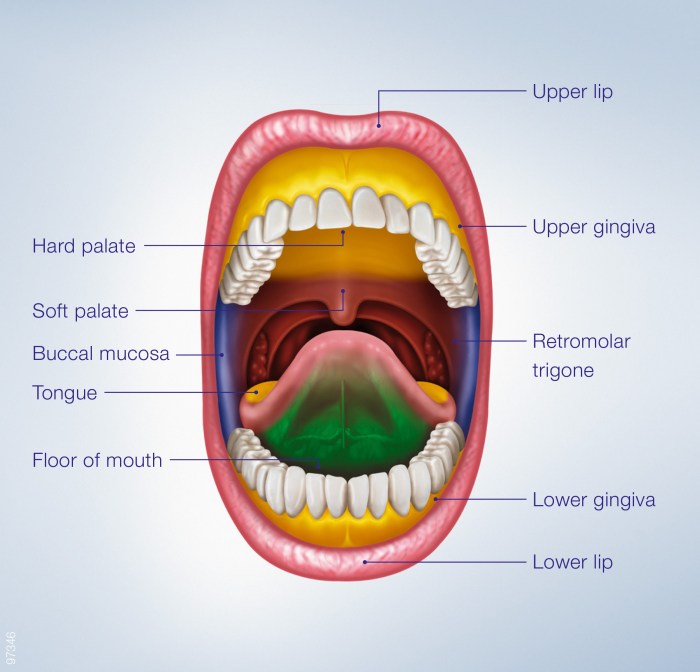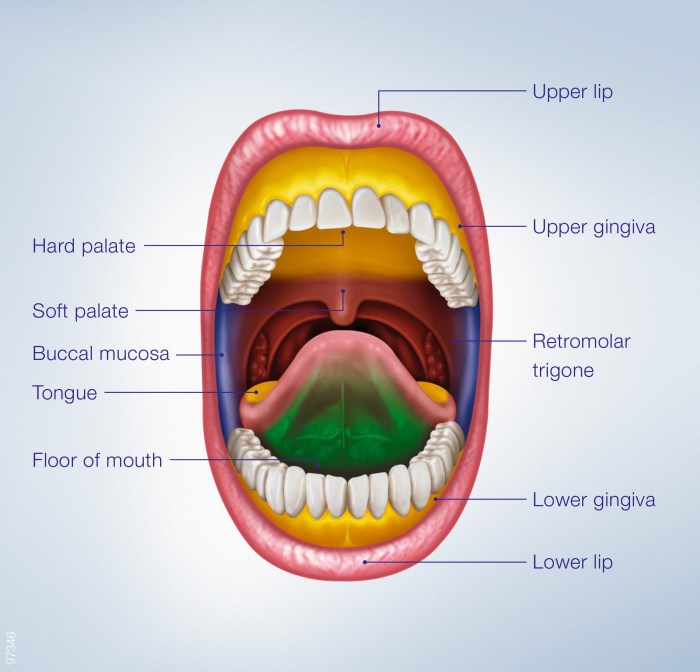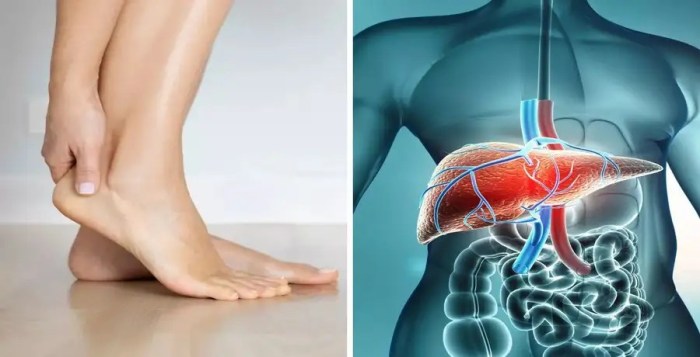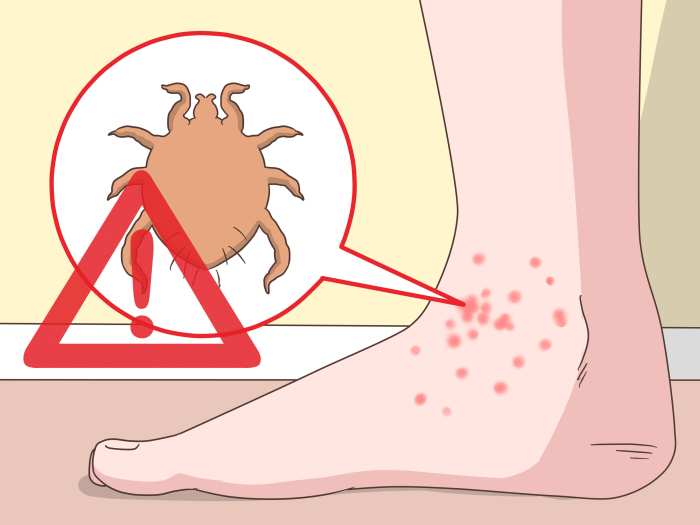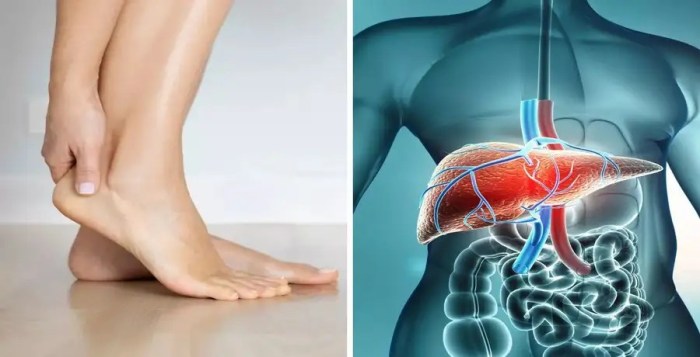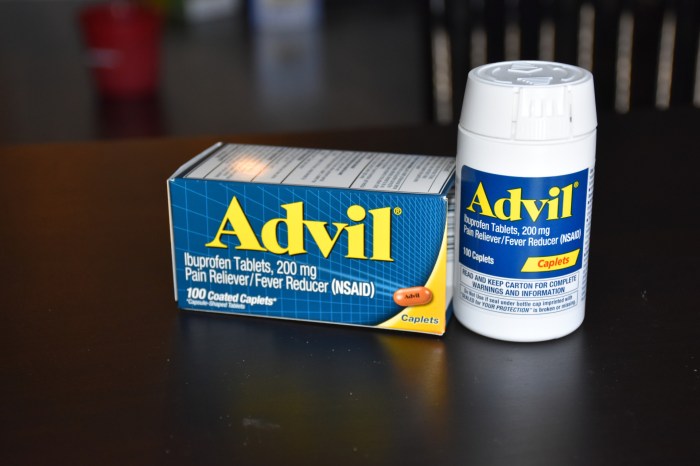DIY cervical roll to manage neck pain while sleeping is a practical and affordable solution for better sleep. Neck pain can disrupt your rest, making it hard to get a good night’s sleep. Creating your own cervical roll can help support your neck in the right position, reducing pain and discomfort. This guide explores the process, covering different materials, construction techniques, and optimal use for a personalized sleep solution.
From simple towel rolls to more complex designs using blankets and pillows, we’ll delve into various DIY cervical roll options. We’ll also discuss crucial factors like sizing, adjustments, and proper positioning to maximize comfort and effectiveness. Whether you’re looking for a quick fix or a long-term solution, understanding how to create your own cervical roll will empower you to take control of your sleep quality.
Introduction to DIY Cervical Rolls
Neck pain is a common ailment affecting people of all ages. It can stem from various factors, including poor posture, stress, muscle strain, or even underlying medical conditions. The pain often manifests as stiffness, soreness, or a dull ache, impacting daily activities and sleep quality. Understanding the root causes of neck pain is crucial for developing effective management strategies.Proper sleep posture plays a vital role in mitigating neck pain.
Maintaining a neutral spine alignment during sleep is essential for preventing strain on the neck muscles. Many people find that their current sleep positions exacerbate existing neck pain or contribute to its development. DIY cervical rolls offer a practical and affordable solution to support the neck during sleep, promoting better spinal alignment and reducing discomfort. They provide a customized support system tailored to individual needs, allowing for a more comfortable and restorative sleep experience.
Materials Needed for a DIY Cervical Roll
Creating a DIY cervical roll is surprisingly straightforward and requires minimal materials. The most crucial aspect is selecting materials that provide adequate support without being overly rigid or uncomfortable. Here’s a list of common and effective options:
- Soft, supportive fabric: Choose a fabric that’s comfortable against your skin, yet firm enough to provide adequate support. Examples include fleece, flannel, or a soft cotton blend. Avoid overly thin fabrics like silk or sheer cotton, as they won’t offer sufficient support.
- Stuffing material: A variety of materials can be used for stuffing, each offering a different level of support and comfort. Consider options like buckwheat hulls, rice, or dried beans. These materials provide a gentle, supportive cushion. Avoid materials that may be allergenic or pose a choking hazard. A combination of stuffing materials can also be considered to optimize the support and comfort level.
- A sturdy, but soft, container or form: This will hold the stuffing in place and determine the shape of the cervical roll. A pillowcase, a clean sock, or a small rectangular piece of cardboard can serve as the container. Ensure the container is soft enough to not exert undue pressure on the neck.
Crafting Your Cervical Roll
Crafting a cervical roll involves careful consideration of the materials and the desired firmness. The roll should be neither too firm nor too soft. An ideal firmness allows for proper support without impeding airflow or circulation.
- Preparing the container: If using a pillowcase or sock, ensure it’s clean and free of any imperfections that might cause discomfort. If using cardboard, ensure it’s a soft and flexible type.
- Filling the container: Gradually fill the container with the chosen stuffing material, leaving some space for adjustment. Overfilling can lead to discomfort, while underfilling can compromise the roll’s support.
- Adjusting the firmness: Once filled, gently squeeze or compress the roll to adjust its firmness. Experiment with the amount of stuffing to find the ideal balance between support and comfort.
- Finishing touches: Secure the opening of the container (e.g., tying the pillowcase or sock). This will help to maintain the shape of the cervical roll. Alternatively, you can use fabric glue to secure the stuffing in place.
Benefits of DIY Cervical Rolls
Customizable support, cost-effectiveness, and tailored comfort are among the key benefits of DIY cervical rolls. They can be adjusted to perfectly suit your individual needs, unlike store-bought rolls that might not provide the desired support. This customization ensures that the roll aligns with your neck’s unique contours, minimizing pressure points and maximizing comfort.
Different Types of DIY Cervical Rolls
Crafting a supportive cervical roll at home offers a cost-effective and personalized approach to managing neck pain during sleep. This flexibility allows you to tailor the support to your specific needs and preferences. Understanding the various materials and construction techniques is key to maximizing comfort and effectiveness.Various materials can be used to create a supportive cervical roll, each with its own set of advantages and disadvantages.
Choosing the right material depends on factors like comfort, support, and budget. A crucial consideration is the ability of the material to maintain its shape and provide consistent support throughout the night.
Materials for DIY Cervical Rolls, Diy cervical roll to manage neck pain while sleeping
Different materials offer varying degrees of support and comfort. Towels, blankets, and pillows are common household items that can be adapted for cervical roll construction. The choice of material influences the roll’s firmness and the level of support it provides.
- Towels: Soft and absorbent, towels are readily available and affordable. Their versatility allows for quick adjustments and modifications to the roll’s shape. However, their limited support might not be ideal for individuals needing a firmer, more substantial roll. For example, a single towel might not offer sufficient support for someone with severe neck pain.
- Blankets: Blankets provide a more substantial and supportive structure compared to towels. Their bulkiness can offer a comforting warmth and a greater degree of pressure relief for the neck. However, blankets can be bulkier and might not be as easily shaped or adjusted as towels.
- Pillows: Pillows, particularly those designed for specific sleeping positions or neck support, offer tailored support. Their pre-formed structure can offer a reliable level of support. However, pillows can be expensive and might not fit everyone’s needs or sleeping preferences.
Construction Techniques
The way a cervical roll is constructed directly impacts its effectiveness and comfort. Different techniques cater to various needs and preferences.
- Rolling a Towel: Simply roll a towel or several towels tightly to create a cylindrical shape. This method is straightforward and adaptable to different thicknesses. Adjust the tightness of the roll to customize the support level.
- Layering Blankets: Stack multiple blankets, carefully arranging them to create a firm and supportive structure. This technique provides more bulk and support compared to a single blanket or towel. For instance, layering three blankets might be appropriate for a heavier individual needing significant support.
- Using Pillows: Position pillows to support the neck and head. For example, one pillow under the head and another slightly under the neck creates a customizable support system. Experiment with different pillow heights and positions to find the optimal configuration.
Comparison of Materials
Each material has its own advantages and disadvantages when constructing a cervical roll. The best choice depends on personal preferences and the desired level of support.
| Material | Pros | Cons |
|---|---|---|
| Towels | Affordable, readily available, easily adjustable | Limited support, may not be suitable for all needs |
| Blankets | More substantial support, comfortable warmth | Bulkier, may not be as easily adjustable |
| Pillows | Tailored support, pre-formed structure | More expensive, might not fit everyone’s needs |
Creating a Comfortable Cervical Roll

A well-made cervical roll can significantly enhance your sleep comfort and alleviate neck pain. Crucially, the roll’s effectiveness hinges on its proper size, fit, and customization to your unique needs. This section will guide you through crafting a supportive and personalized cervical roll.Creating a supportive cervical roll is not a one-size-fits-all process. Careful consideration of sizing and adjustment is vital for achieving optimal neck alignment and comfort during sleep.
Understanding how to tailor your cervical roll to your specific needs will ensure maximum effectiveness in relieving pain and promoting restful sleep.
Importance of Proper Sizing and Fitting
Proper sizing and fitting of the cervical roll are essential for achieving the desired support and preventing discomfort. A roll that’s too small won’t provide adequate support, potentially exacerbating neck pain. Conversely, a roll that’s too large can lead to an unnatural curve, hindering spinal alignment and resulting in discomfort. The roll should cradle your neck naturally, allowing for a gentle curve and avoiding any pressure points.
Adjusting the Cervical Roll for Optimal Comfort
Several methods can be employed to adjust a cervical roll for optimal comfort. Experimentation is key. Trial and error will help you determine the ideal position and firmness for your neck. Consider using different types of padding materials or adjusting the overall length and width of the roll. A cervical roll should allow your head and neck to rest in a neutral, comfortable position without undue pressure or strain.
Customizing the Cervical Roll for Individual Needs
Customization is crucial for ensuring the cervical roll provides targeted support. Various methods can be used to personalize the roll to meet your unique needs. Adding padding, such as a thin layer of fleece or a small pillow, can increase the roll’s cushioning and comfort. Experiment with different materials and thicknesses to find the perfect combination. A cervical roll that’s too firm might not adequately support your neck, while a roll that’s too soft might not provide enough stability.
Creating a Cervical Roll for Proper Spinal Alignment
The goal is to create a roll that promotes proper spinal alignment. A properly positioned cervical roll should help maintain a natural curve in the neck, preventing strain and supporting the head. This involves ensuring the roll’s height and width align with the natural curvature of your neck. Begin by positioning the roll in the space between your shoulders and head, ensuring the roll is positioned to maintain a neutral spinal alignment.
Ensure the roll does not force your head into an unnatural position. A good cervical roll allows the neck to rest in a comfortable and natural position.
Using DIY Cervical Rolls for Sleep
Snuggling into a comfy bed, ready for a restful night’s sleep, shouldn’t be marred by neck pain. A DIY cervical roll, crafted with care and tailored to your needs, can significantly enhance your sleep experience by providing optimal support and alignment. This section dives into how to strategically utilize your homemade cervical roll to maximize comfort and alleviate potential discomfort.Correct positioning of your cervical roll is crucial for maximizing its benefits.
Proper placement ensures the roll supports your neck’s natural curvature, preventing strain and promoting a more comfortable sleep posture.
Sleep Positions and Cervical Roll Placement
Different sleep positions interact differently with the body’s alignment. Understanding these interactions allows you to position your DIY cervical roll for optimal support and comfort. By considering your preferred sleep position and the roll’s placement, you can achieve a better night’s sleep.
Back Sleep
Sleeping on your back is often recommended for maintaining spinal alignment. To maximize this, place the cervical roll directly beneath your neck, ensuring it comfortably fills the gap between your shoulders and the bed. The roll should be firm enough to maintain your neck’s natural curve without feeling overly rigid or constricting. Ensure the roll is snug enough to provide support without being too tight.
Side Sleep
Side sleeping can also be beneficial with a cervical roll. Position the roll along the curve of your neck, supporting your head and neck in a neutral position. If you’re a side sleeper, place the roll on the side of your head and neck to avoid putting pressure on one side of the neck. Consider the roll’s size and your body type to ensure comfort.
The roll should not press against your jawline.
Stomach Sleep
Sleeping on your stomach is generally not ideal for neck health. While a cervical rollmight* offer some support, it’s unlikely to provide significant benefit compared to back or side sleeping. The unnatural curvature of the spine during stomach sleeping can put stress on the neck.
Optimal Sleep Positions and Cervical Roll Usage
| Sleep Position | Cervical Roll Placement | Benefits |
|---|---|---|
| Back Sleep | Directly beneath the neck, filling the gap between shoulders and bed | Maintains spinal alignment, promotes comfort |
| Side Sleep | Along the curve of the neck, supporting head and neck in a neutral position | Supports head and neck, prevents strain on one side |
| Stomach Sleep | Potentially, but not ideal | Minimal support, can exacerbate neck strain |
Common Mistakes to Avoid
Using a cervical roll incorrectly can lead to discomfort and potentially worsen existing neck pain. Carefully consider these points to avoid potential issues.
- Using a roll that’s too firm or too soft: A roll that’s too firm can restrict movement and cause discomfort, while a too-soft roll won’t provide adequate support.
- Incorrect placement: The roll should be positioned directly beneath the neck, aligning with the natural curve of the spine. Incorrect positioning can result in neck pain.
- Using the roll for extended periods: If you’re experiencing chronic neck pain, consult with a healthcare professional. Using a cervical roll for prolonged periods without proper guidance could be detrimental.
- Ignoring personal comfort: Pay attention to your body’s feedback. If the roll isn’t providing comfort or support, adjust its placement or try a different size.
Safety and Considerations: Diy Cervical Roll To Manage Neck Pain While Sleeping
DIY cervical rolls can be a helpful tool for managing neck pain, but it’s crucial to approach them with caution and awareness of potential risks. Understanding the limitations of homemade solutions and prioritizing professional guidance is vital for ensuring your safety and well-being. This section explores the importance of responsible DIY practices and highlights when to seek expert medical advice.
Potential Risks of DIY Cervical Rolls
Improperly constructed or sized cervical rolls can lead to discomfort, further neck pain, or even complications. A poorly fitted roll may not provide adequate support, exacerbating existing neck issues or potentially causing new ones. Inaccurate measurements and unsuitable materials can lead to pressure points or uneven support, hindering the intended therapeutic effect. Furthermore, homemade rolls might not meet the same quality standards as professionally manufactured products, potentially compromising the long-term effectiveness and safety of the support.
Importance of Professional Consultation
Before embarking on a DIY cervical roll project, consulting a healthcare professional is paramount. A doctor or physical therapist can assess your specific needs and diagnose the underlying cause of your neck pain. They can provide tailored recommendations for appropriate support, ensuring that any cervical support you use aligns with your individual condition and needs. A professional evaluation is essential for determining the correct type, size, and firmness of the support needed to promote healing and prevent further injury.
This personalized approach is crucial for avoiding potential harm and achieving optimal results.
Recognizing Limitations of DIY Cervical Rolls
DIY cervical rolls are not a substitute for professional medical care. They are designed for temporary support and comfort, not for long-term treatment of chronic neck pain or severe injuries. While they can provide temporary relief from discomfort, they may not address the root cause of the problem. For instance, a DIY roll might offer comfort during sleep, but it won’t address underlying issues like muscle imbalances or spinal misalignments that require more comprehensive treatment strategies.
Their effectiveness is contingent upon proper use and understanding of the limitations.
Making a DIY cervical roll for neck pain relief while sleeping is a great idea, but for optimal results, consider how long melatonin lasts in your body. Understanding how long melatonin supplements stay active in your system might influence when you use them alongside your cervical roll. Ideally, you want to align your sleep routine to maximize the effectiveness of both methods for managing your neck pain.
A well-fitted cervical roll supports your neck while you sleep, promoting better posture and reducing stiffness. Knowing how long does melatonin last can help you strategize when to take it, and to ensure you get the best sleep possible. This can help ensure your neck pain is managed effectively and you can wake up feeling refreshed.
Warning Signs Requiring Professional Medical Advice
If you experience any of the following symptoms while using a DIY cervical roll or after initiating use, seek immediate medical attention:
- Increased or persistent neck pain:
- Numbness or tingling in the arms or hands:
- Headaches or dizziness:
- Difficulties with swallowing or breathing:
- Signs of infection or inflammation around the neck area:
Persistent or worsening neck pain despite using the cervical roll may indicate a more serious underlying condition. If the pain intensifies, it is crucial to seek professional help to identify and address the root cause.
Ever tried a DIY cervical roll for better neck support while sleeping? It’s a fantastic way to alleviate aches and pains. While you’re focusing on your neck health, it’s also important to consider other potential issues. For example, a lingering cough can be a real pain point. If you’re experiencing one, exploring effective treatments like those outlined in this article on treatments for lingering cough might be beneficial.
Ultimately, a comfortable neck position at night is key, and a DIY cervical roll can be a game-changer in your sleep routine.
These symptoms could signify nerve compression or damage. Prompt medical intervention is vital to prevent potential long-term complications.
Headaches or dizziness associated with neck pain might be related to underlying structural issues in the neck or head. Consult a healthcare professional to rule out potential causes and receive appropriate guidance.
Any difficulty with swallowing or breathing should immediately trigger a visit to a healthcare provider. Such symptoms can signal serious medical conditions requiring immediate attention.
Redness, swelling, warmth, or pus around the neck area are potential indicators of infection. Seek immediate medical attention to prevent the spread of infection and complications.
Alternatives and Comparisons
Finding the right support for your neck pain while sleeping can feel like a treasure hunt. Sometimes, a DIY cervical roll is perfect, but other times, a different approach might be more suitable. This section explores alternatives and comparisons, helping you weigh the pros and cons of various options.While a DIY cervical roll can be an effective and budget-friendly solution, store-bought supports and other sleep strategies also offer unique advantages.
Understanding these differences can help you make an informed decision that best addresses your individual needs.
Comparing DIY Cervical Rolls with Store-Bought Neck Supports
DIY cervical rolls offer the benefit of customization, allowing you to tailor the support to your exact preferences. However, store-bought options often come pre-shaped and pre-filled with materials designed for a more standardized fit. This can be beneficial for those who prefer a consistent level of support, or who find it challenging to create a roll that meets their specific needs.
Advantages of Store-Bought Cervical Rolls
Store-bought supports often provide a more consistent and predictable level of support. This can be particularly valuable for individuals who experience fluctuating neck pain or find it challenging to maintain a consistent DIY roll throughout the night. Pre-made rolls can also come with different fillings and cover materials, offering options for temperature regulation and comfort.
Disadvantages of Store-Bought Cervical Rolls
Store-bought neck supports can be more expensive than a DIY solution. Customization is often limited, and finding a support that perfectly addresses your unique needs and preferences can be challenging. Some store-bought supports may contain materials that aren’t as breathable or hypoallergenic as homemade options.
Other Methods to Manage Neck Pain While Sleeping
A cervical roll isn’t the only tool in your sleep toolkit. Various other methods can effectively manage neck pain. These range from adjusting your sleep position to incorporating other therapies.
Adjusting Sleep Position
Sleeping on your back can sometimes exacerbate neck pain. Experimenting with different positions, like sleeping on your side with a pillow between your knees or elevating your head with a few extra pillows, might provide more comfortable support.
Alternative Therapies
Consider incorporating alternative therapies alongside or instead of a DIY cervical roll. These can include:
- Heat Therapy: Applying a heating pad or warm compress to the affected area can help relax muscles and alleviate pain.
- Cold Therapy: Using an ice pack or cold compress can help reduce inflammation and pain, particularly in the acute phase of neck pain.
- Massage Therapy: A professional massage therapist can target specific muscle groups in the neck and shoulders, improving circulation and releasing tension.
- Acupuncture: This traditional Chinese medicine technique involves inserting thin needles into specific points on the body to stimulate energy flow and reduce pain.
- Stretching Exercises: Gentle stretching exercises, recommended by a healthcare professional, can help improve neck flexibility and range of motion.
Properly selecting a neck support, whether DIY or store-bought, is crucial for alleviating pain and improving sleep quality. Experimentation with different methods and consulting with healthcare professionals are key steps in managing neck pain effectively.
Illustrative Examples
Creating your own cervical roll can be a personalized solution for neck pain relief. Understanding different designs and construction methods allows you to tailor the support to your specific needs. Experimenting with various materials and shapes will help you find the perfect fit for your comfort.A well-made DIY cervical roll can provide the crucial support needed for a restful night’s sleep and help ease discomfort throughout the day.
Properly crafted rolls are designed to maintain the natural curve of your neck, reducing strain and pressure points.
Rolled-Up Towel Cervical Roll
This is a simple and readily available method. A rolled-up towel offers a basic level of support.
Materials: A soft, absorbent towel.
Instructions:
- Place the towel flat on a surface.
- Roll the towel tightly from one end to the other, creating a cylindrical shape.
- Adjust the tightness of the roll to your desired firmness.
- Place the roll under your neck, supporting the natural curve of your spine.
Blanket Cervical Roll
A blanket offers a more substantial and potentially warmer support than a towel. This method provides an option for a firmer roll.
Ever struggled with neck pain at night? A DIY cervical roll can be a game-changer for a more comfortable sleep. Finding the right support is key, and it can be a surprisingly effective solution. While we’re on the topic of health concerns, if you’re dealing with wet AMD, understanding who treats it is crucial. Fortunately, resources like who treats wet amd provide valuable information.
Ultimately, a well-made cervical roll can significantly improve your sleep quality and overall neck health.
Materials: A soft, comfortable blanket.
Instructions:
- Lay the blanket flat on a surface.
- Roll the blanket tightly into a cylindrical shape, similar to rolling a towel.
- To enhance the firmness, you can use a pillow or a few books to further compact the roll.
- Place the roll under your neck, ensuring the curve of your neck is well-supported.
Adjustable Cervical Roll
This design offers customized support, allowing you to adapt the firmness and height.
Materials: A soft pillowcase, filling material (e.g., buckwheat hulls, rice, or foam pellets), and a measuring tape.
Instructions:
- Measure the length of the pillowcase needed for your desired neck support.
- Fill the pillowcase with the chosen filling material.
- Adjust the amount of filling material to achieve your desired firmness.
- Secure the pillowcase opening, either by tying it or using a closure.
- Place the roll under your neck, ensuring the support aligns with your neck’s natural curve.
Diagram:
Imagine a pillowcase. The pillowcase is filled with your chosen filling material. The filling material determines the firmness. You can adjust the filling to achieve the perfect firmness.
Maintenance and Care
Keeping your DIY cervical roll clean and well-maintained is crucial for its effectiveness and longevity. Proper care ensures a hygienic and comfortable support system for your neck. Regular cleaning and preventative measures will significantly extend the life of your roll and help you avoid potential health concerns.
Proper Cleaning Methods
Regular cleaning prevents the buildup of dirt, sweat, and potentially harmful microorganisms. The cleaning method depends on the materials used to construct your cervical roll. For rolls made of washable fabrics like cotton or linen, gentle machine washing is usually sufficient. For rolls incorporating stuffing like buckwheat hulls or dried beans, a gentle hand wash or spot cleaning is recommended to prevent damage to the filling.
Always check the care instructions provided with the materials used.
Preventing Mold and Mildew
Mold and mildew growth can be a serious concern, particularly in humid environments. To prevent this, maintain good ventilation around your cervical roll, especially if you tend to sweat while sleeping. Allow your cervical roll to dry completely after washing or exposure to moisture. Avoid storing the roll in a damp or enclosed space. If your roll does show signs of mold or mildew, discard it immediately and replace it with a new one.
Ensuring Longevity
Several strategies can significantly extend the life of your DIY cervical roll. Regular inspection for wear and tear is essential. Look for any signs of fraying, damage to the filling, or structural weaknesses. Proper storage is also vital. Store your cervical roll in a clean, dry, and well-ventilated area, away from direct sunlight or extreme temperatures.
Avoid excessive compression or bending, as this can damage the roll’s structure and reduce its effectiveness over time.
When to Replace a Cervical Roll
Replacing your DIY cervical roll is necessary when it no longer provides adequate support or comfort. If you notice a significant decrease in support or a change in the roll’s shape, it’s time for a replacement. Regular use and the material used for construction will affect how quickly a cervical roll degrades. Another important consideration is any visible signs of damage, such as tearing, fraying, or significant settling of the filling material.
If you experience discomfort or pain when using the roll, it’s a clear sign to replace it.
Concluding Remarks

In conclusion, creating a DIY cervical roll can be a fantastic way to address neck pain and improve your sleep. By understanding the different materials, construction techniques, and proper use, you can tailor a support system that aligns with your specific needs. Remember to prioritize comfort, safety, and proper spinal alignment. If you experience persistent pain, always consult a healthcare professional.
Experiment with various designs and find what works best for you. Good sleep is essential for overall well-being, and a DIY cervical roll can be a significant step in achieving that goal.

